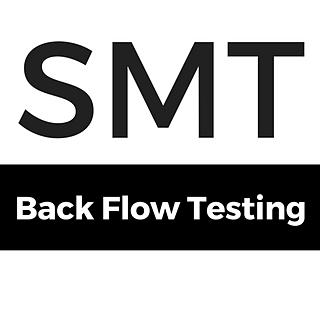Backflow in Restaurants: Common Causes, Hotspots, and How to Prevent It
- Steve Tamkee
- Oct 3
- 2 min read

Running a restaurant involves juggling food safety, plumbing, and customer service simultaneously. However, one issue that often goes unnoticed until it's too late? Backflow happens when contaminated water flows backward into your clean water supply. It can pose a threat to customer safety, violate health codes, and disrupt operations. Here's what you need to know to prevent it.
Where Backflow Happens in Restaurants
Backflow risks are especially high in areas where potable and non-potable water systems connect. The most common hotspots include:
Dishwashing stations: Especially high-temp or chemical sanitizing machines with hose connections.
Ice machines: Vulnerable if water lines aren’t protected.
Pre-rinse spray valves are often submerged in dirty water during use.
Carbonated beverage machines: CO₂ can push water back into supply lines.
Soap Dispensers and sinks: Cross-connections can occur with improperly installed faucets or sprayers.
Mop sinks or janitorial stations: Hoses submerged in dirty water create siphon risk.
Booster heaters and steamers Are Connected to water lines, which can cause pressure fluctuations.
Why Backflow Happens in Restaurants
Backflow usually occurs due to:
Backsiphonage: A sudden drop in water pressure (e.g., water main break or high demand) creates suction, pulling dirty water into clean lines.
Backpressure: When equipment, such as soda machines or dishwashers, pressurizes water higher than the supply line, it forces water (and contaminants) backward.
These scenarios often go unnoticed—until there’s a health inspection failure or contamination event.
How to Prevent Backflow in a Restaurant
Here are key steps to keep your restaurant’s water safe:
1. Install Proper Backflow Prevention Devices
Use air gaps on dishwashers, ice machines, and sinks to prevent backflow.
Install backflow preventers (like double-check valves or vacuum breakers) on soda machines, pre-rinse hoses, and water-fed equipment.
Ensure indirect drainage is in place where required to prevent cross-connection.
2. Schedule Annual Backflow Testing
Many municipalities require annual backflow testing for restaurants and other establishments.
Work with a certified backflow tester to stay compliant and catch early signs of wear or failure.
3. Train Staff on Safe Water Practices
Never submerge hoses in buckets or sinks.
Report low water pressure or plumbing issues immediately.
Avoid DIY plumbing fixes—one misstep can create a cross-connection.
4. Maintain Equipment Regularly
Clean and inspect soda systems, ice machines, and dishwashers.
Ensure valves, seals, and connections are in good condition.
Managing Your Restaurant Plumbing
Backflow issues in restaurants can lead to costly shutdowns and serious health risks. However, with the right preventive measures, regular maintenance, and a trained staff, you can keep your water safe, your customers happy, and your kitchen compliant.




Comments